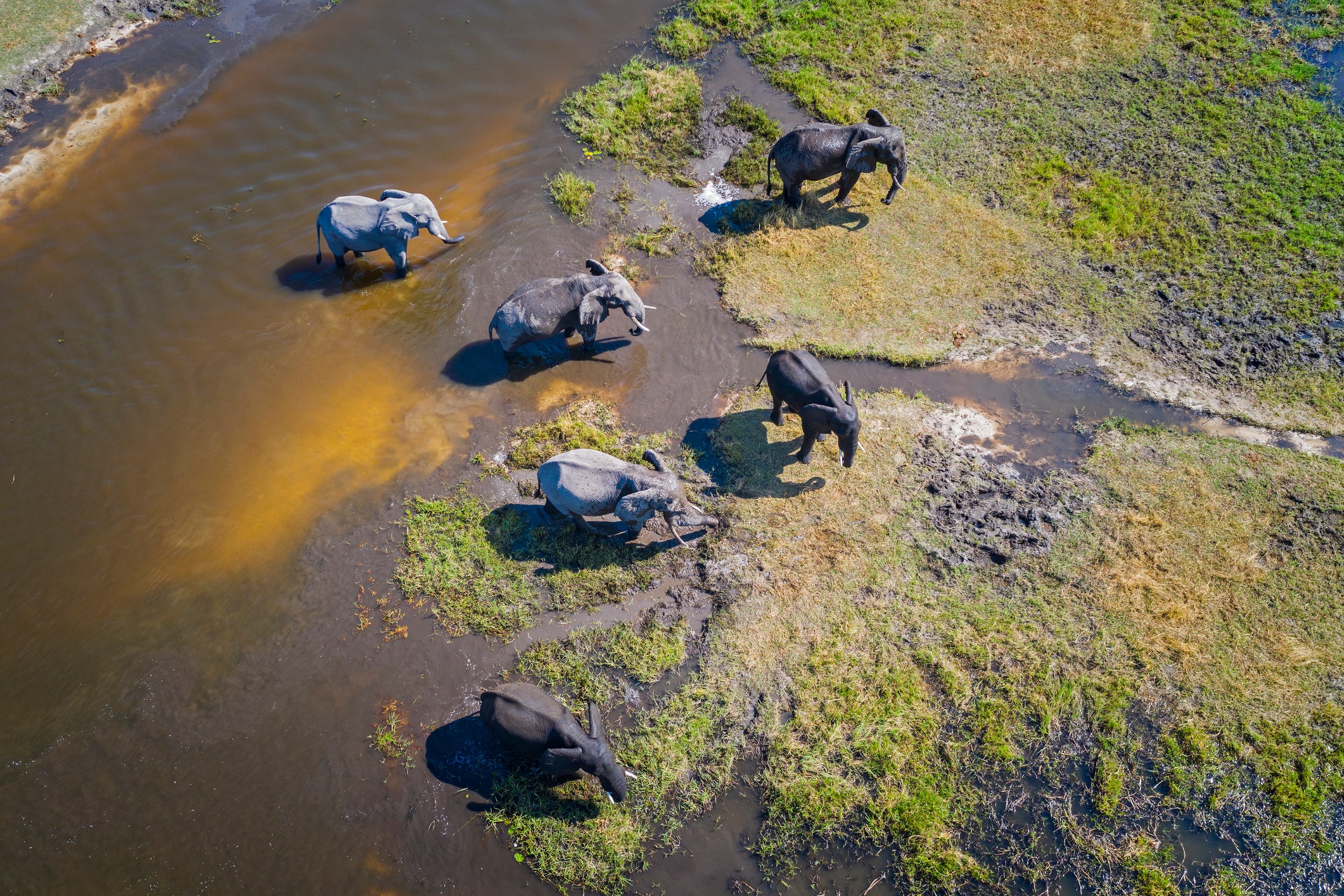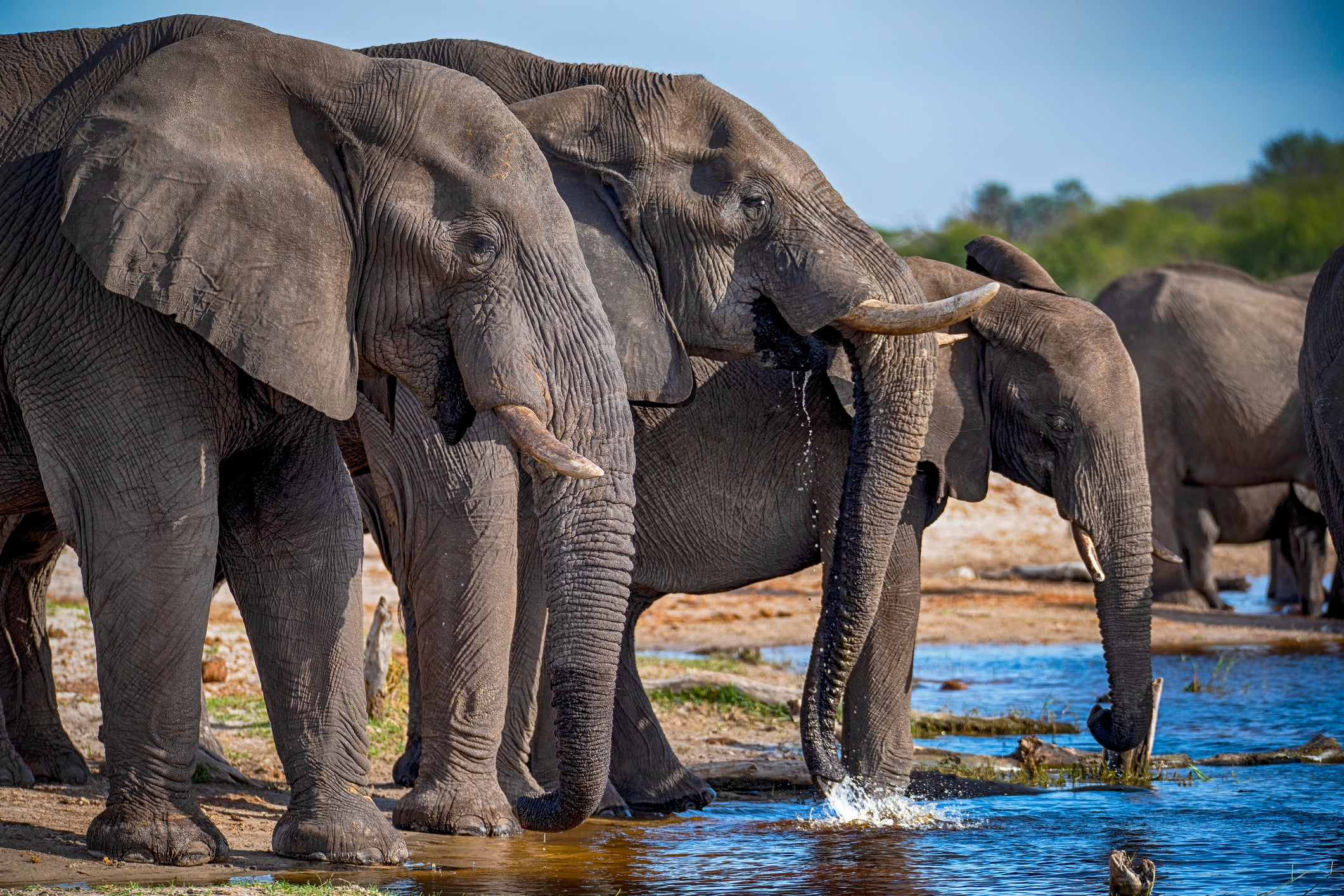Hundreds of endangered African elephants suddenly died. New evidence finds a link to climate change
Scientists are warning about the continued and heightened threat from toxic algae blooms in waterways
New data from satellites has provided further evidence that the deaths of hundreds of endangered Botswanan elephants were the result of climate change.
A new analysis found that the mass die-off in 2020 was likely tied to toxic algae in watering holes. The blue-green algae, also known as cyanobacteria, had exploded after the region experienced a very wet year followed by a very dry one, British researchers said Thursday.
“Botswana is home to a third of all African elephants, and this unprecedented die-off within their largest remaining population underlines the escalating concerns surrounding the impact of drought and climate change on the Okavango Delta, one of the most important ecosystems in the world,” Davide Lomeo, a PhD student at King’s College London, said in a statement.

Lomeo was the lead author of the research published in the journal Science of The Total Environment.
The authors analyzed the satellite data, looking at the relationship between the locations of the deceased elephants and 3,000 surrounding waterholes.
The waterholes that were near the elephants showed elevated levels of algae and multiple bloom events that year, especially during the period between May and June when the elephants were first spotted. Elephant bodies that were decayed were more scattered than those that had died later in the months-long die-off, indicating that the mysterious deaths were different from typical elephant mortality patterns. After drinking, the elephants died within about 88 hours of exposure.
“We identified 20 waterholes near fresh carcasses that experienced increased algal bloom events in 2020 compared to the previous three years combined. These waterholes also exhibited the highest average algal biomass of the period 2015 – 2023,” said Davide.
The elephants were first spotted in Botswana’s Okavango Delta. While toxins produced by the algae were a suspected cause, samples could not be collected at the time because of the Covid-19 pandemic and the deaths of elephants in neighboring Zimbabwe had been tied to septicemia, also known as blood poisoning.
The authors say their findings all but confirm toxic algae as the cause of the die-off, and warn there’s a heightened risk going forward.
Shifting from the very dry 2019 to the extremely wet 2020 may have promoted the “unprecedented” algal growth. Such extremes will become more likely due to the impacts of human-caused climate change.
Higher water temperatures driven by climate change and the increased runoff of nutrients carried by rainwater into waterways can result in conditions favorable for algal blooms, according to the Environmental Protection Agency. While not all blooms are harmful, some cyanobacteria can produce cyanotoxins that can cause serious illness or death in animals.

“Southern Africa is projected to become drier and hotter under climate changes and, as a result, waterholes across this region will likely be drier for more months of the year,” Davide said. “Our findings point to the potential negative effects on water quantity and quality, and the catastrophic repercussions on animals, this could have.”
African elephants are endangered, and their natural habitats are fragmented. Found in central and eastern Africa, those that venture outside of protected borders are likely to be killed by poachers or come into conflict with other humans, despite an international ban on the ivory trade passed in 1989.
The herbivores once roamed freely from the south Sahara Desert to northern South Africa. There are approximately 415,000 African elephants left in the world. The World Wildlife Foundation said that, in 2016, experts estimated their population had fallen by 111,000 over the course of a decade.
Join our commenting forum
Join thought-provoking conversations, follow other Independent readers and see their replies
0Comments